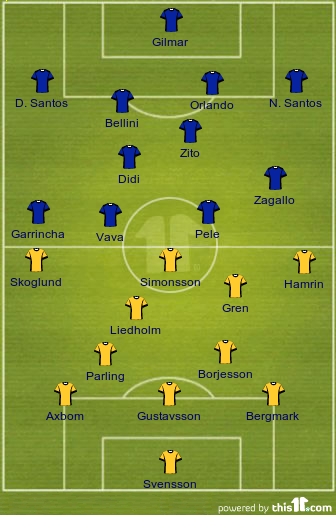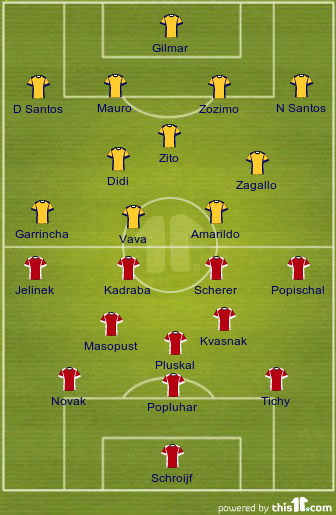At around the time that Hungary were making their move towards playing with a withdrawn centre-forward Brazil
For the national team though, and the rest of the world, the first time they saw the new Brazil
The first time that Brazil
In midfield Didi had now dropped fully back into the centre to dictate play and Dino Sani acted as a minder to protect him. It is often suggested that Brazil
 |
| Brazil (above) v. Sweden, 1958 |
As a result
 |
| Brazil (above) v. Czechoslovakia, 1962 |

2 comments:
Very interesting.
How long was this formation kept up for? Were Pele, Zico, Socrates ever introduced to it?
Formations that unfortunately would get destroyed these days.
could you tweet me your response? I'm @lovefootie
Pelé was part of it in their first 2 World Cup victories. Although he started in the front 4, he regularly dropped into midfield (similar to how Messi played as second striker on many occasions). That being said, the formation began to die out in the late 60s and early 70s because of the deficit in midfield. Add to that, the success both Dutch and German teams had with variants of the 4-3-3.
Post a Comment